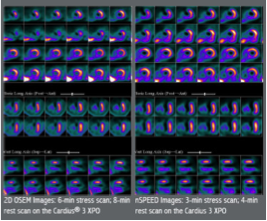 Berkeley Lab’s contribution to the development of nuclear medicine began in the 1930s. John Lawrence, brother of the Lab’s founder Ernest Lawrence, treated a leukemia patient with a radioactive isotope in 1936. A year later, researcher Joseph Hamilton was the first to use radioactive tracers to study biological processes in the human body and to address the property — short half-life– that makes radioisotopes safe for medical use. Common isotopes used in research and medicine today such as iodine-131, technetium-99m, carbon-14 and others were discovered at Berkeley Lab in the late 1930s.
Berkeley Lab’s contribution to the development of nuclear medicine began in the 1930s. John Lawrence, brother of the Lab’s founder Ernest Lawrence, treated a leukemia patient with a radioactive isotope in 1936. A year later, researcher Joseph Hamilton was the first to use radioactive tracers to study biological processes in the human body and to address the property — short half-life– that makes radioisotopes safe for medical use. Common isotopes used in research and medicine today such as iodine-131, technetium-99m, carbon-14 and others were discovered at Berkeley Lab in the late 1930s.
In addition to the use of radioisotopes in medical treatments, Berkeley Lab played a key role in medical imaging. Researcher Hal Anger developed the scintillation camera to image gamma rays emitted by radioactive isotopes. Later referred to as the Anger Camera, the scintillation camera was the clear predecessor of today’s imaging technologies. Anger and his fellow researchers went on to develop the multi-crystal whole body scanner, the dynamic, gated positron emission tomography (PET) and applications for the Anger camera such as dynamic PET diagnosis of heart disease.
More recently, Berkeley Lab’s Alex Pines has pioneered new developments and applications for nuclear magnetic resonance (NMR) spectroscopy to amplify detection and begin to miniaturize the technology for use in chemistry, materials science and biomedicine. A final, and important, addition to Berkeley Lab’s legacy in nuclear medicine is the contribution of research Will Siri, who wrote the first textbook on radioisotope safety in research and medicine. Lab researchers have also been instrumental in establishing radiation guidelines for human space travel.
